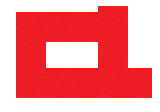A Framework for Representing Language Acquisition in a Population Setting
Language variation and change are driven both by individuals' internal cognitive processes and by the social structures through which language propagates. A wide range of computational frameworks have been proposed to connect these drivers. We compare the strengths and weaknesses of existing approaches and propose a new analytic framework which combines previous network models' ability to capture realistic social structure with practically and more elegant computational properties. The framework privileges the process of language acquisition and embeds learners in a social network but is modular so that population structure can be combined with different acquisition models. We demonstrate two applications for the framework: a test of practical concerns that arise when modeling acquisition in a population setting and an application of the framework to recent work on phonological mergers in progress.
